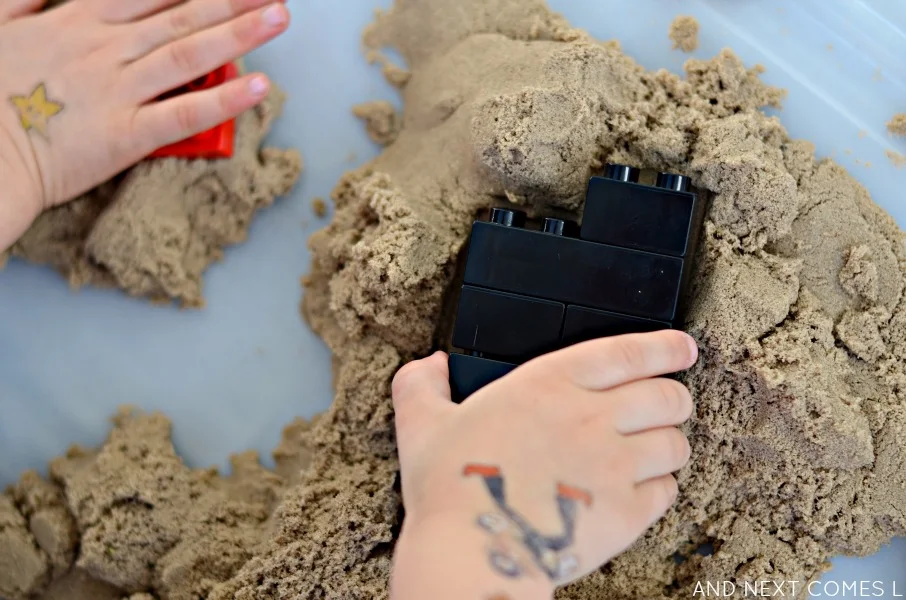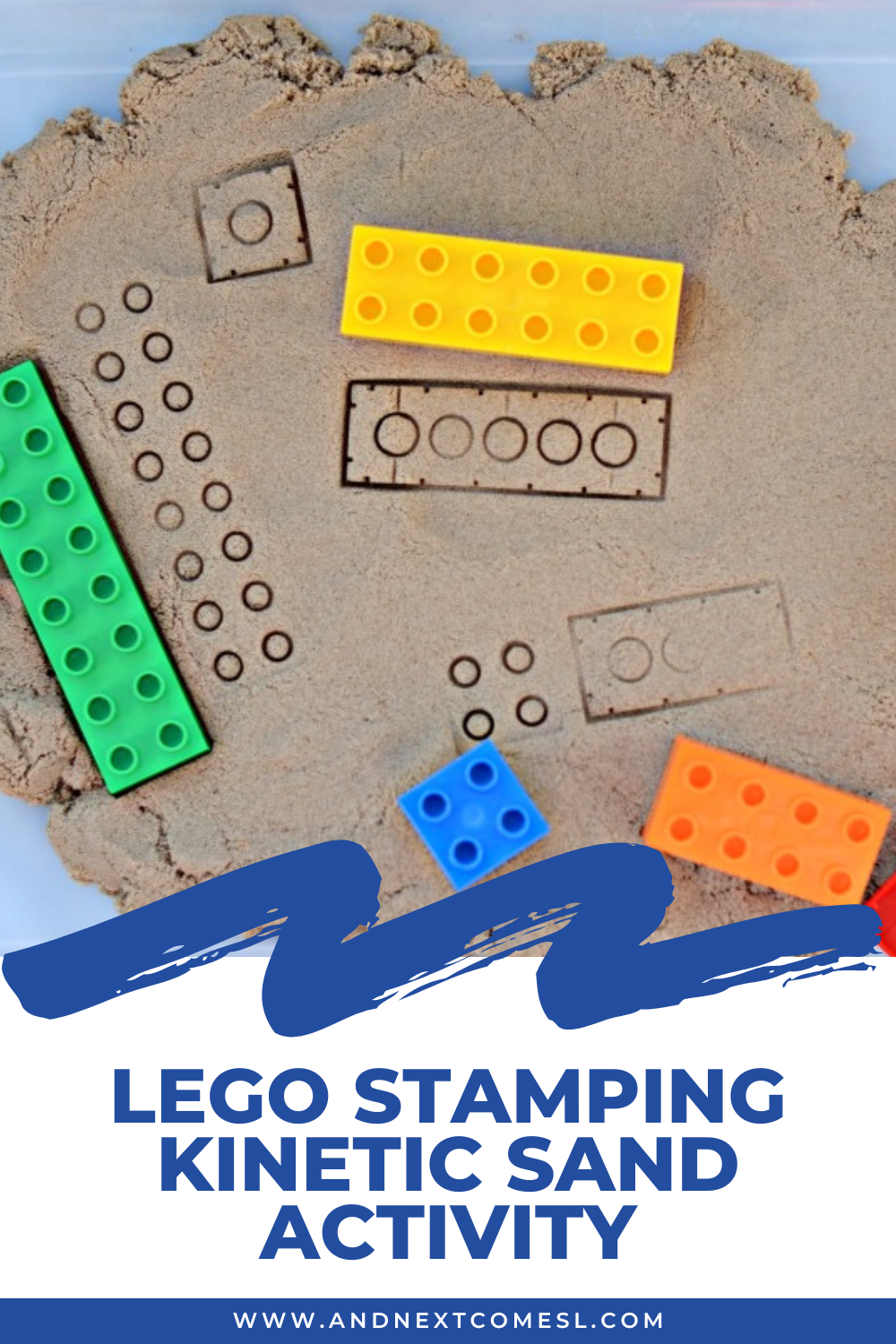Kinetic sand has been a staple sensory bin material for us for quite some time.
So to spice things up a bit, we added some LEGO duplo to the mix.
The addition of LEGO to kinetic sand transformed this simple sensory activity into a fine motor stamping activity. And the boys loved it! Plus, they manipulated the LEGO stamping in ways that I didn't originally consider.
Seriously, you'll want to give this LEGO stamping kinetic sand activity a try. I've also included some variations and twists of this activity near the end of the post so you can expand it further.
What You'll Need for this LEGO Stamping Activity
Now, don't be shocked when I tell you that this kinetic sand activity only requires two materials. I mean the title basically tells you all you need...Yep, all you need is:
- LEGO Duplo - We used pieces of different lengths, colors, and thicknesses.
Simply dump the kinetic sand into a container and add some LEGO pieces. Voila! Easy, right? I actually stamped some of the LEGO pieces in the kinetic sand (see below) before presenting this activity to my kids, but that's optional.
Stamping LEGO in Kinetic Sand is a Great Fine Motor Activity for Toddlers & Preschoolers!
The boys started off by stamping the tops and bottoms of various Duplo pieces, exploring what kind of prints they would make in the sand. The impressions that the Duplo make are pretty neat, right?
Next, my boys had a brilliant idea that I never even considered!
My oldest, J, had the idea to build a shape out of LEGO and then stamp the side of his shape into the kinetic sand. K joined in too and they spent quite a few minutes assembling shapes and stamping.
Build...
Press it into the sand...
...and reveal!
Overall, it was a fun activity that both of my boys enjoyed. But any activity with kinetic sand at this point is guaranteed to be a hit.
Other Variations of this Kinetic Sand Activity You Might Want to Try
There are lots of ways to adapt this kinetic sand activity:
- Make letters and numbers using the Duplo and stamp those letters and numbers into the kinetic sand
- Create some kinetic sand puzzles by creating some shapes, stamping them in the sand, and then encouraging your kids to match the LEGO shapes to their stamped shapes in the sand
- Swap the LEGO for cookie cutters or rubber stamps
- Have your child stamp their name or sight words in the sand using the LEGO pieces
- Stamp patterns in the sand using different sized LEGO bricks
- Stamp the LEGO pieces to create math equations to practice addition (i.e., stamp the bricks and then count up and add the number of impressions the pieces left)
Are you going to give this LEGO stamping kinetic sand activity a try? If so, have fun!









